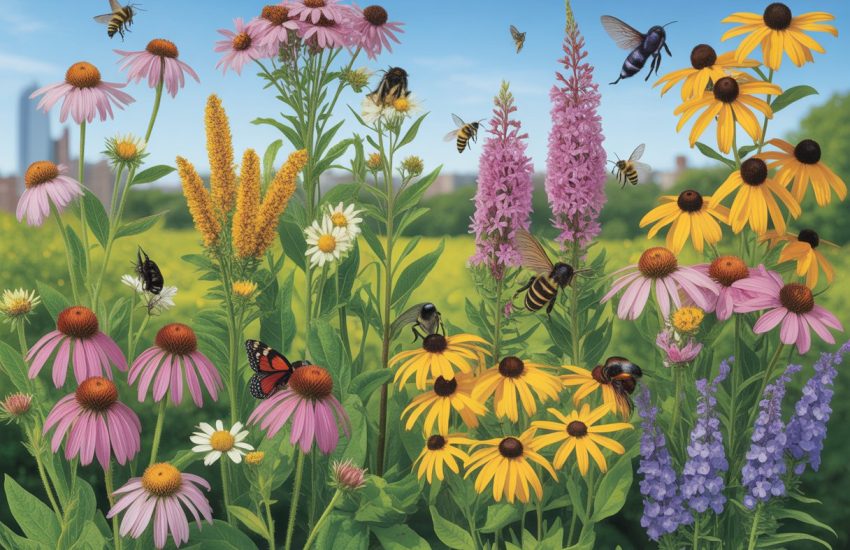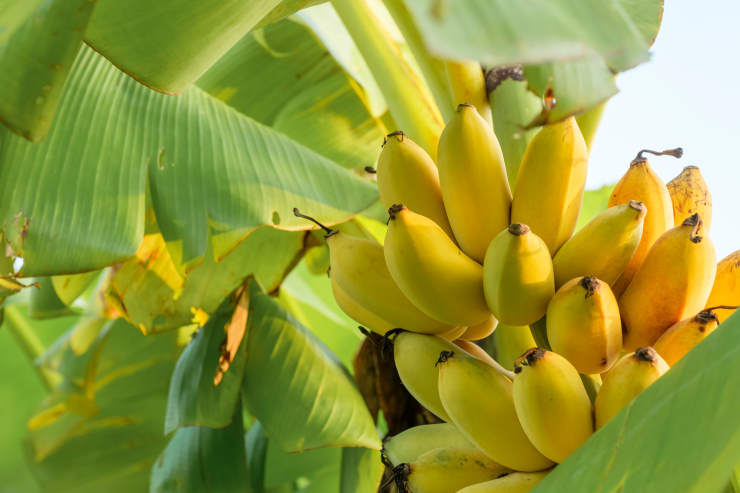Lawn and Garden: How to Care for Your Desert Plants
Deserts are known for their temperature extremes, limited water, bare landscape, and poor soil conditions. While all these factors might totally destroy the average plant, desert plants have developed the necessary adaptive features to survive such harsh conditions. However, cultivating a lush and thriving garden filled with desert plants requires a profound understanding of their unique characteristics.
The initial key lies in choosing the right type of desert plants. When you move beyond the stereotypical cacti and succulents, the desert, surprisingly, harbors a diverse array of plant life capable of bringing beauty and vitality to any garden. With meticulous care, a well-informed gardener can encourage the flourishing of the diverse and captivating plant species that have evolved to thrive in the most challenging environment.
So, what does it take to successfully establish a lawn or garden teeming with desert plants? Well, this guide is designed to furnish you with the essential knowledge and skills required to cultivate a vibrant and resilient garden filled with desert plants. So read on!
Types of Desert Plants Suitable for Your Lawn and Garden
Desert plants are a fascinating, diverse category of vegetation that has evolved to thrive in dry regions with scant rainfall. These plants contribute to the unique beauty of desert landscapes and also play crucial roles in maintaining ecological balance in most dry regions. They are characterized by their ability to store moisture in their stems or roots. Some of the notable types include:
Cacti
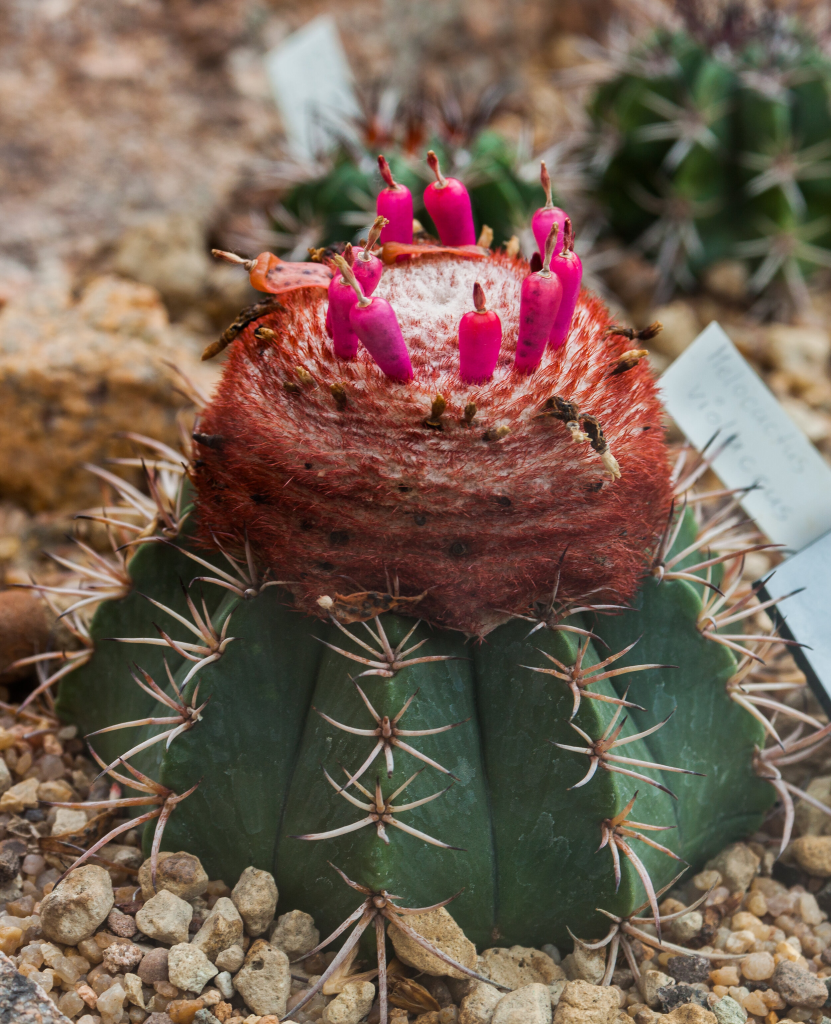
Cacti are perhaps the most iconic desert plants known for their spiny exterior and distinctive appearances. Varieties range from the tall and columnar Saguaro to the low-growing Barrel Cactus. The Saguaro Cactus is a tall, tree-like desert plant with arms that thrives in hot, arid regions and can live for many decades. The Barrel Cactus is recognizable by its barrel-like shape, often covered in spines that produce colorful flowers during the blooming season.
Succulents

Succulents are desert plants with chunky, fleshy leaves, stems, or roots that store water, allowing them to thrive in low-water environments. Their ability to withstand extended drought makes them ideal choices for water-conservative gardening. They have unique shapes and textures that add visual interest to the garden. Examples include Aloe Vera, Agave, and Echeveria.
Yuccas
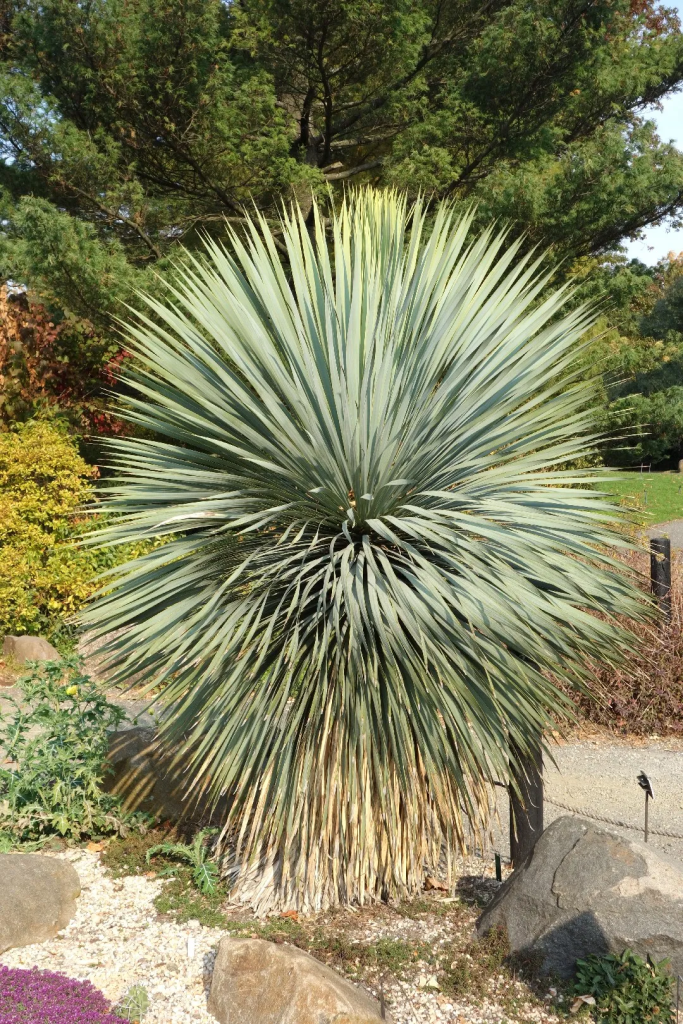
Yuccas are hardy plants that thrive in arid environments with sword-shaped leaves and tall, elegant flower spikes. They often produce visually appealing flowers and are versatile additions to desert landscapes. Popular species include Yucca filamentosa and Yucca rostrata.
Dwarf Palms
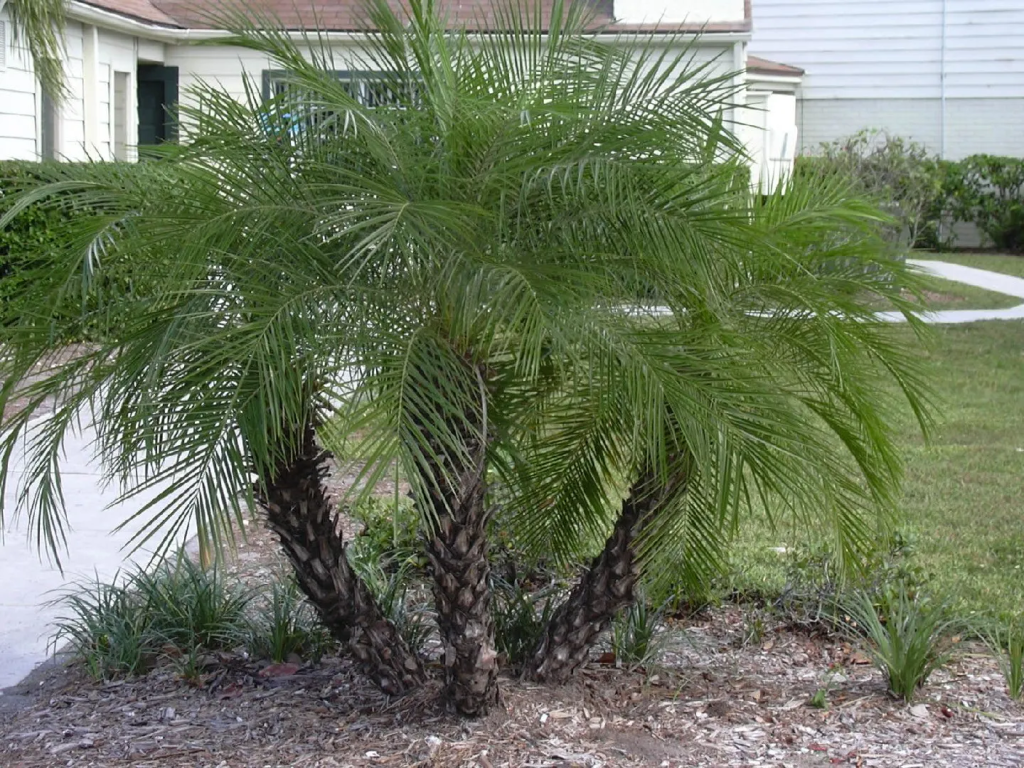
Dwarf Palms are palms that are well-adapted to hot and dry conditions, providing a tropical feel while requiring less water than some other palm varieties. Examples include the Mediterranean Fan Palm (Chamaerops humilis), which can add a touch of the exotic to desert landscapes.
Desert Wildflowers
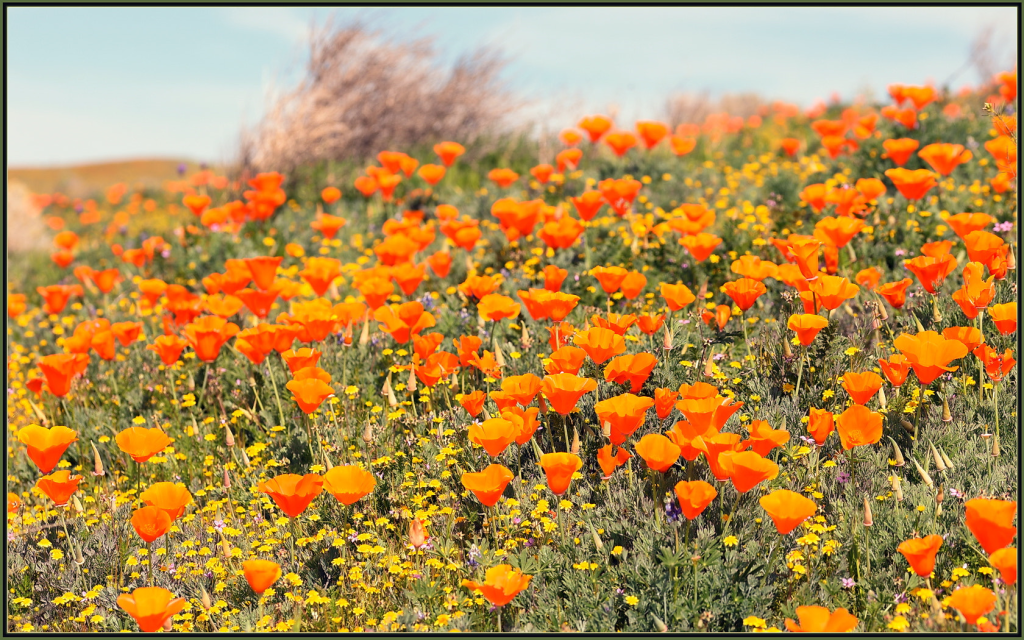
Various wildflowers, including Desert Mariposa Lily (Calochortus kennedyi) and Desert Bluebells (Phacelia campanularia), thrive in arid conditions. They typically bloom in the spring when conditions are right, bringing a burst of color to your desert landscape. Their adaptability makes them suitable for naturalistic and low-maintenance garden designs.
Ground Covers

Ground covers such as Ice Plant (Delosperma) and Lantana offer low-growing options with colorful flowers. They help suppress weeds, retain soil moisture, and add bursts of color to the landscape. They are pretty valuable for creating a cohesive design in a garden space that is devoid of one. If you live in arid southern California, you can read up on ten ground cover plants to grow in southern California. For those in Arizona, we’ve got you covered, too, with a list of ground-cover plants that will thrive in your Arizona garden.
Xerophytes & Halophytes

Xerophytes often have small, narrow, or waxy leaves to minimize water loss through transpiration. Some shed leaves during dry periods to conserve moisture. However, halophytes are plants that have adapted to saline or salty soils, common in desert regions where soil salinity can be high.
Xerophytes often have small, narrow, or waxy leaves to minimize water loss through transpiration, with some specie shedding their leaves during dry periods to conserve moisture. Halophytes have evolved mechanisms to tolerate or exclude salt, allowing them to grow in soils that would be inhospitable for many other plants.
How to Care for Desert Plants in Your Lawn and Garden
Caring for desert plants requires special attention and consideration due to the unique environmental conditions of arid regions. It is a unique and nuanced process, requiring attention to various factors to ensure their health and vitality. Here’s a comprehensive guide on how to care for your desert plants in your lawn and garden, covering key aspects:
Watering Techniques for Desert Plants
Desert plants have evolved to survive in arid conditions, and one of their adaptations is a root system that thrives on deep, infrequent watering. This means that these plants prefer to be watered less often but more thoroughly instead of frequent, shallow watering. This watering strategy encourages the roots to grow deeper into the soil.
Watering these plants in the early morning or late afternoon when temperatures are cooler is best to minimize water loss through evaporation. It is advisable you let the soil dry out completely between waterings. This prevents overwatering, which can harm these plants.
Finally, when planning a garden with desert plants, it’s a good idea to group plants with similar water requirements together. This allows you to tailor your watering practices to different garden areas and optimize water usage. This strategy, known as zoning, can contribute to a healthier, more sustainable garden.
Sun Exposure Management for Desert Plants
When landscaping with desert plants, it’s crucial to consider their sunlight requirements. Different species have varying tolerances to full sun, partial shade, or filtered light. Begin by selecting plants that are well-suited to the specific sunlight conditions in your garden. Then, strategically place your plants based on these requirements. Group those that thrive in full sun in areas that receive direct sunlight, and place shade-tolerant plants where they can benefit from partial shade.
If you’re introducing new plants, acclimate them gradually to their sun exposure. This allows them to adjust to the intensity of sunlight, preventing shock and promoting healthier growth. Also, consider shielding sensitive plants from intense midday sun, especially during extreme heatwaves. Temporary shading methods, such as shade cloth, strategically placed rocks, or taller plants, can provide relief and prevent sunscald. If you have potted desert plants, remember to periodically rotate the containers to ensure all sides of the plant receive adequate sunlight.
Lastly, establish windbreaks to protect plants from harsh sunlight and strong winds. Fences, walls, or strategically placed plants can serve as effective windbreaks. Observe how sunlight patterns change with the seasons and adjust plant placements accordingly.
Dealing with Pests and Diseases
Maintaining a healthy desert garden involves regular inspections of your plants, including leaves, stems, and the soil around the base. Early detection is key for effective pest and disease control. If you notice signs of infestation or disease, promptly prune and remove the affected parts and dispose of them away from the garden to prevent the spread of pests.
Encourage natural predators like ladybugs and predatory beetles, which prey on common pests, to maintain a balanced ecosystem in your garden. You can also use organic alternatives to chemical pesticides, such as neem oil or insecticidal soaps, which are effective against various pests and less harmful to beneficial insects. Companion planting strategies, where you intersperse pest-repelling plants among your desert plants, can deter pests and create a more resilient garden ecosystem.
Adopt good cultural practices, such as ensuring proper spacing between plants for adequate air circulation, which reduces the risk of fungal diseases. Ensure your soil is well-draining to prevent attracting pests and developing root diseases. If necessary, adjust the soil with sand or perlite to improve drainage. Before introducing new plants to your garden, quarantine them as a precautionary measure to prevent the introduction of pests or diseases.
Fertilizing Desert Plants
Desert plants are adapted to thrive in low-nutrient soils, so avoiding over-fertilizing is important because it can lead to adverse effects such as root burn and reduced drought tolerance. Fertilizer should be applied during the active growing season, typically in spring and early fall, when desert plants have increased nutrient demands to support growth and flowering. Before applying fertilizer, ensure the soil is moist to help in the even distribution of nutrients and prevent potential root damage.
Adhere to the recommended application rates and frequencies provided on the fertilizer packaging to avoid overuse, which can be harmful. If you have desert plants in containers, consider diluting the fertilizer to half or quarter strength, as these plants may be more sensitive to concentrated fertilizers. Applying fertilizer in the morning when temperatures are milder allows the plants to absorb nutrients more efficiently before the heat of the day.
Consider occasional applications of micronutrient supplements, especially if your soil lacks specific trace elements, as micronutrients play a crucial role in the overall health of desert plants. Many desert plants undergo a winter rest period with reduced metabolic activity, so during this time, reduce or eliminate fertilizer applications to align with the plant’s natural growth cycle. Lastly, refrain from fertilizing stressed plants due to drought, disease, or extreme temperatures, as fertilizing under such conditions can exacerbate stress.
Seasonal Care for Desert Lawn and Garden Plants
Caring for desert plants involves tailoring your watering frequency based on the seasons. During the growing seasons of spring and fall, increase watering to support growth. Conversely, reduce watering during the dormant winter when plants require less moisture. Pruning is another vital aspect of desert plant care. Conduct pruning in late winter or early spring before the growing season begins. Remove dead or damaged growth to stimulate new growth and maintain the plant’s shape. Mindful trimming may be necessary during the active growing season.
Temperature fluctuations that accompany seasonal transitions can cause stress to desert plants. Therefore, it’s essential to adjust care practices accordingly. During winter, protect your desert plants from frost by covering sensitive plants with frost cloth or blankets during cold nights. Applying a thicker layer of organic mulch around the base of your desert plants in winter can act as insulation, protecting the soil from temperature extremes and providing a buffer against frost.
During periods of extreme heat, provide temporary shade, especially for more sensitive plants. This can be achieved using shade cloth or by planting taller, shade-providing plants nearby. Additionally, take note of when your desert plants typically flower. Adjust your care routine to support blooming, providing adequate water and nutrients during these crucial periods. By following these guidelines, you can ensure the health and vitality of your desert plants.
Monitoring and Maintaining Desert Plants in Your Yard
Maintaining a healthy desert lawn and garden involves regular visual inspections of your plants. Check for signs of pests, diseases, or any abnormalities in plant appearance, as early detection allows for prompt intervention. Use a moisture meter to monitor soil moisture levels, as desert plants prefer well-draining soil, and maintaining the proper moisture balance is crucial for their health. Signs such as wilting, yellowing leaves, or changes in growth patterns can indicate issues that may need addressing.
Engage in regular trimming and pruning to maintain the shape and size of your desert plants. Remove dead or damaged growth to encourage new, healthy growth. Regularly apply a layer of organic mulch around the base of your plants. Mulch helps retain soil moisture, suppress weeds, and regulate soil temperature. Periodically aerate the soil around your desert plants. This promotes better root growth, improves water penetration, and enhances overall soil health.
Regularly clean and sanitize your gardening tools to prevent the spread of diseases from one plant to another. Disinfect tools after each use, especially if working with an infected plant. Maintain a gardening journal to record observations, care practices, and any issues you encounter. This helps track plant health trends and informs future care decisions. If you face persistent problems or are unsure about the health of a particular plant, seek advice from gardening professionals.
Final Words on Growing Healthy Desert Plants in Your Yard
Growing healthy desert plants in your yard is a journey of discovery and adaptation. As we’ve explored various aspects of caring for desert plants, from water-wise practices to pest management, fertilization, and seasonal adjustments, it’s evident that success lies in understanding and respecting the resilience of these plants. Remember, each careful watering, every seasonal adjustment, and the mindful attention to detail contributes to the long-term health and vitality of your desert garden.
For further reading:
https://www.gardeningknowhow.com/special/spaces/desert-garden-ideas.htm
https://www.instructables.com/Tiny-Desert-Garden/
https://www.ftd.com/blog/desert-plants
https://www.petalrepublic.com/types-of-desert-plants/
https://www.pbs.org/articles/how-plants-adapt-to-the-desert-or-low-water-environments

